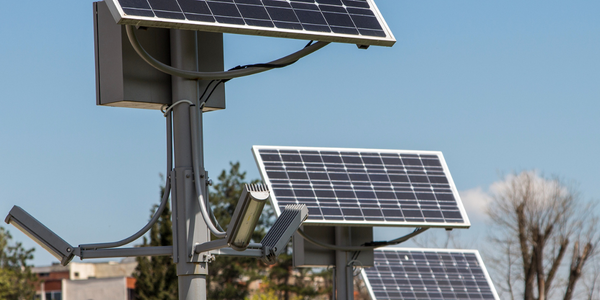公司规模
Large Corporate
地区
- Europe
国家
- Denmark
产品
- IBM InfoSphere BigInsights Enterprise Edition
- IBM System x iDataPlex dx360 M3
- IBM System Storage DS5300
技术栈
- Big Data
- Data Modeling
- Supercomputing
实施规模
- Enterprise-wide Deployment
影响指标
- Productivity Improvements
- Cost Savings
- Customer Satisfaction
技术
- 分析与建模 - 大数据分析
- 基础设施即服务 (IaaS) - 云计算
适用行业
- 可再生能源
适用功能
- 离散制造
- 产品研发
用例
- 预测性维护
- 能源管理系统
服务
- 数据科学服务
- 云规划/设计/实施服务
关于客户
维斯塔斯是一家丹麦公司,自 1979 年以来一直从事风力发电系统的开发、制造、销售和维护。该公司已在六大洲的 66 个国家安装了 43,000 多台陆基和海上风力涡轮机。如今,维斯塔斯平均每三小时安装一台风力涡轮机,全天 24 小时不间断,其涡轮机每年可产生超过 9000 万兆瓦时的电能,足以为数百万家庭供电。该公司的成功取决于其快速响应和实现商业价值的能力,其中包括确定风力涡轮机的最佳位置,以最大限度地提高发电量并降低能源成本。
挑战
全球最大的风能公司 Vestas 依靠精确安装风力涡轮机来最大程度地提高发电量并降低能源成本。风力涡轮机的最佳安装位置会显著影响其性能和使用寿命。然而,确定涡轮机最佳安装位置的过程非常复杂且耗时,通常需要长达三周的时间。在竞争激烈的行业中,快速响应和交付商业价值至关重要,这种延迟是不可接受的。此外,将涡轮机安装在次优位置的成本可能非常高,可能会导致性能不佳、保修成本增加和客户流失。
解决方案
Vestas 与 IBM 合作实施了大数据解决方案,该解决方案显著缩短了数据处理时间并提高了涡轮机放置决策的准确性。该解决方案将开源 Apache Hadoop 软件与 IBM 的独特技术和功能相结合,使 Vestas 能够处理非常大的数据集。这使 Vestas 能够将其风力数据网格的基本分辨率从 27x27 千米区域降低到 3x3 千米区域,从而更直接地了解潜在位置。该解决方案还包括在 IBM System x iDataPlex 系统上运行的 IBM InfoSphere BigInsights 软件,这使 Vestas 能够将能源消耗降低 40%,同时提高计算能力。该超级计算解决方案是迄今为止世界上最大的解决方案之一,它使 Vestas 能够在系统的 12 个机架中的每个机架中运行两倍数量的服务器,从而减少其数据中心所需的占地面积。
运营影响
数量效益

Case Study missing?
Start adding your own!
Register with your work email and create a new case study profile for your business.
相关案例.

Case Study
Remote Monitoring & Predictive Maintenance App for a Solar Energy System
The maintenance & tracking of various modules was an overhead for the customer due to the huge labor costs involved. Being an advanced solar solutions provider, they wanted to ensure early detection of issues and provide the best-in-class customer experience. Hence they wanted to automate the whole process.

Case Study
Vestas: Turning Climate into Capital with Big Data
Making wind a reliable source of energy depends greatly on the placement of the wind turbines used to produce electricity. Turbulence is a significant factor as it strains turbine components, making them more likely to fail. Vestas wanted to pinpoint the optimal location for wind turbines to maximize power generation and reduce energy costs.

Case Study
Siemens Wind Power
Wind provides clean, renewable energy. The core concept is simple: wind turbines spin blades to generate power. However, today's systems are anything but simple. Modern wind turbines have blades that sweep a 120 meter circle, cost more than 1 million dollars and generate multiple megawatts of power. Each turbine may include up to 1,000 sensors and actuators – integrating strain gages, bearing monitors and power conditioning technology. The turbine can control blade speed and power generation by altering the blade pitch and power extraction. Controlling the turbine is a sophisticated job requiring many cooperating processors closing high-speed loops and implementing intelligent monitoring and optimization algorithms. But the real challenge is integrating these turbines so that they work together. A wind farm may include hundreds of turbines. They are often installed in difficult-to-access locations at sea. The farm must implement a fundamentally and truly distributed control system. Like all power systems, the goal of the farm is to match generation to load. A farm with hundreds of turbines must optimize that load by balancing the loading and generation across a wide geography. Wind, of course, is dynamic. Almost every picture of a wind farm shows a calm sea and a setting sun. But things get challenging when a storm goes through the wind farm. In a storm, the control system must decide how to take energy out of gusts to generate constant power. It must intelligently balance load across many turbines. And a critical consideration is the loading and potential damage to a half-billion-dollar installed asset. This is no environment for a slow or undependable control system. Reliability and performance are crucial.

Case Study
Remote Monitoring and Control for a Windmill Generator
As concerns over global warming continue to grow, green technologies are becoming increasingly popular. Wind turbine companies provide an excellent alternative to burning fossil fuels by harnessing kinetic energy from the wind and converting it into electricity. A typical wind farm may include over 80 wind turbines so efficient and reliable networks to manage and control these installations are imperative. Each wind turbine includes a generator and a variety of serial components such as a water cooler, high voltage transformer, ultrasonic wind sensors, yaw gear, blade bearing, pitch cylinder, and hub controller. All of these components are controlled by a PLC and communicate with the ground host. Due to the total integration of these devices into an Ethernet network, one of our customers in the wind turbine industry needed a serial-to-Ethernet solution that can operate reliably for years without interruption.

Case Study
Temperature monitoring for vaccine fridges
Dulas wanted a way to improve the reliability of the cold chain, facilitating maintenance and ensuring fewer vaccines are spoiled. Dulas wanted an M2M solution which would enable them to record and report the temperature inside vaccine refrigerators.

Case Study
IoT Powering A New Way to Light Streets with Bifacial Solar Panels
When James Meringer’s commercial contracting business experienced a rapid increase in solar projects, he also saw an opportunity to extend the benefits of solar by using the bifacial solar panels he’d become familiar with in new ways. Bifacial solar panels enable sunlight from both sides of the panel, making it a more efficient harvest of solar power. Seeing the panel’s power, James and his team set out to use the same technology for street lighting. Until now, solar street lights have served as utilitarian solutions that force designers to choose between form and function. The Mira Bella Energy team has changed that.



